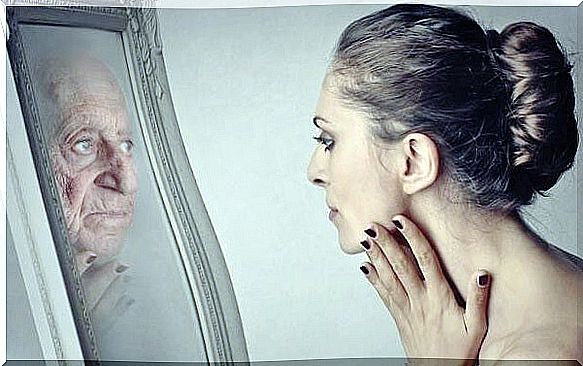Dorian Gray Syndrome

Dorian Gray syndrome is a very modern set of symptoms. It consists of a resistance to aging and an extreme fear that the body will deform over the years. This type of resistance is considered pathological as long as it generates a series of negative effects on behavior.
The name of this syndrome comes from the famous novel The Picture of Dorian Gray by Oscar Wilde. It tells the story of a man who wants to achieve eternal youth. The circumstances combine to make it a portrait of him and not him, who undergoes the aging process.
Vanity and physical appearance have taken on an unusual importance in today’s world. Hence, Dorian Gray syndrome has emerged as a manifestation of that cult of the body that so marks our days. And hence this has become a problem that borders on the pathological.
The description of Dorian Gray syndrome
Dorian Gray syndrome was first described in 2000 by the psychiatrist Brosig B., who wrote a text that bore precisely that name. He noticed that the number of patients who came to his office almost in a state of panic was increasing due to the aging process.

The most serious thing is that those who suffer from Dorian Gray syndrome sometimes carry out dangerous practices, in order to avoid aging. Multiple surgeries, Botox overload, and similar activities. It is known that when there is no control over these types of procedures, health is at risk.
It is important to note that people who are victims of Dorian Gray syndrome not only want to remain youthful outward, but also refuse to complete their emotional maturation process. They want to keep looking at life as if they were 18 years old. In fact, they continue to behave like teenagers.
Characteristics of those affected
There is still no standardization regarding the traits that someone with Dorian Gray syndrome presents. However, Brosig B. managed to identify some characteristics that appear to be very representative of this difficulty.

These are the main behavior patterns that someone with this syndrome presents:
- Terror of deformation. The technical name for this is dysmorphophobia.
- Absolute refusal to accept the process of physical and emotional maturation.
- Abuse in the use of procedures to change the image.
- Consumption of drugs intended to delay aging processes or increase functions that are disappearing.
- Anxiety disorders.
- Personality disorders.
- Self-destructive behaviors.
These types of people almost always live between illusion and frustration. They fantasize that a new treatment or procedure will restore their youth. When they realize that there is still nothing that can fully make this fantasy come true, they feel frustrated, but they assume it as a failure of intervention and not of their perception.
A brief analysis of the syndrome
What is usually behind a person with Dorian Gray syndrome is someone terrified. The greatest fear is feeling rejected for not conforming to the canons of beauty that your environment imposes. It assumes that the shape of your body or your face is a definitive factor in your life project. Unfortunately, they are partly right. Superficiality has led to the acceptance or promotion of work in many companies also depending on these variables.

Now, an environment can propose any type of perverse patterns, but each individual has the possibility of responding in multiple ways to this attempt at imposition. Some will not allow themselves to be objectified. Others, on the other hand, such as those with Dorian Gray syndrome, passively bow to these mandates. Why? Because they have a narcissistic void. They underestimate its value and give exaggerated power to social mandates.
Deep down, what exists is a rejection of oneself. You cannot accept what you are, or how you are. The power that one has over oneself is not recognized, nor the autonomy that every human being has. These people are assumed to be defenseless. They defend themselves from the world by denying themselves. They reaffirm themselves by forcing themselves to be what others want them to be. Hence, anxiety is a constant companion for them. It is a complex situation that requires psychotherapy to be overcome.









